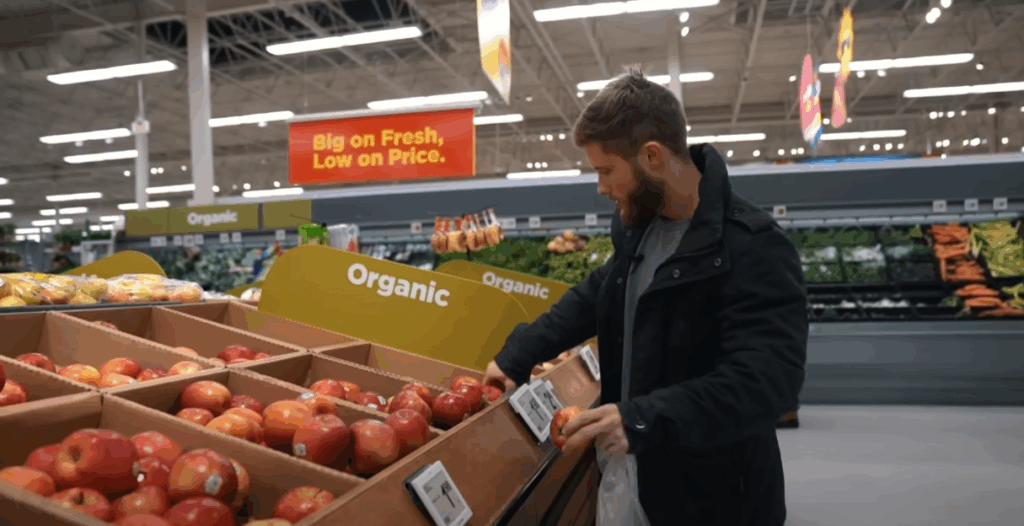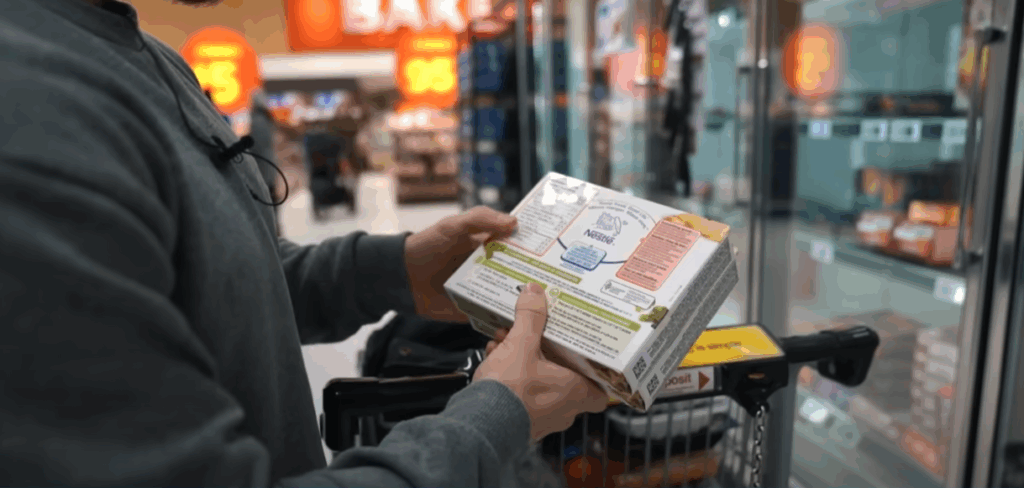Inside a Physique-Focused Grocery Haul: Real Foods for Fat Loss and Performance
When you’re in a fat loss phase, your grocery cart should reflect both your physique goals and your commitment to nutrition. This isn’t just about low calories—it’s about smart, sustainable choices that support training performance, muscle retention, and hunger control. In this article, we’ll break down a real-world grocery shopping strategy designed for someone actively cutting body fat while staying strong in the gym.

Strategic Simplicity: Why a Minimalist Pantry Works
One of the most effective fat loss tactics that often goes overlooked is keeping your kitchen setup intentionally minimal. By avoiding stockpiles of calorie-dense snacks or tempting treats, you reduce the likelihood of late-night slip-ups. This approach supports dietary discipline, especially when motivation is low or hunger hits hard.
The key is not deprivation, but intentional planning—stocking only the foods that align with your goals. This doesn’t mean your meals need to be bland or boring, but that the food environment around you is helping, not hurting, your fat loss progress.
Dialed-In Nutrition: Flexible Structure Over Rigid Rules
Fat loss success hinges on consistency, not perfection. That’s why having a basic structure to your intake makes the process easier. For this particular phase, the daily calorie target is around 2,500 kcal—enough to create a mild deficit while maintaining strength and energy.
Protein intake is prioritized, with a minimum target of 200 grams per day. Fat intake is kept within the 60–80g range, and carbs are allowed to fluctuate freely based on appetite and activity level. This flexible dieting strategy ensures optimal performance and recovery while still creating steady fat loss over time.
Locking in Habits: Consistent Meals That Work
When life gets busy, having consistent go-to meals simplifies nutrition tracking and builds routine. For instance, one reliable anchor meal is a pre-bed combination of cottage cheese, popcorn, fruit, and maybe some whole grain crackers. This meal delivers casein protein to support overnight muscle repair while being filling and satisfying.
By repeating a few staple meals throughout the week, it’s easier to hit macros without constant guesswork. You can still include variety in taste, but the structure remains intact.

The Fat Loss Grocery Haul: What’s In the Cart?
Let’s break down the go-to items you’ll find in a performance-focused fat loss grocery haul. This shopping trip prioritizes nutrient density, protein content, satiety, and convenience—while still keeping flavor in the mix.
1. Fruits for Performance and Satiety
- Bananas – Ideal for a quick pre-workout carb source.
- Clementines – Great for portable, vitamin C-rich snacks.
- Berries (blackberries, raspberries, blueberries) – Packed with antioxidants and fiber; excellent for late-night cravings or post-workout meals.
- Cantaloupe and Mixed Fruit – Pre-packaged options help ensure you actually eat them before they go bad.
Fruits are a priority over vegetables here—not because veggies aren’t important—but because fruit is generally more palatable, easier to incorporate, and still highly nutritious. This makes it easier to stick with consistently.
2. Leafy Greens & Salad Kits
- Sweet Kale Salad Mix – Comes with dressing, pumpkin seeds, and dried cranberries; easy to boost with extra spinach for added volume and micronutrients.
Vegetable intake doesn’t need to be overwhelming. A simple salad base mixed with one or two other greens can go a long way. And when the kit tastes good, you’ll actually want to eat it.
3. Lean Protein Staples
- Ground Turkey (Medium Lean) – A go-to for meal prepping. Easy to cook and versatile—mix with rice, salsa, and shredded cheese for a quick bowl.
- Atlantic Salmon Fillets – Fatty fish rich in omega-3s and protein. Typically consumed once or twice per week.
- Free-Range Eggs – Used daily. Usually one yolk and four whites for breakfast. Yolks add healthy fats and flavor, whites supply lean protein.
Protein is the foundation of this shopping list. Each option is easy to prepare in batches and stores well, making weekly meal planning simple.
4. Dairy & Bedtime Staples
- Low-Fat Cottage Cheese – A slow-digesting protein perfect for nighttime meals. One cup provides ~30g of protein.
- Low-Fat Popcorn – High in volume and fiber, perfect for a filling low-calorie evening snack.
- Whole Grain Crackers – Adds crunch and texture to the bedtime meal.
These foods are filling, convenient, and macro-friendly—ideal for when hunger peaks in the evening hours.

5. Frozen Meals & Convenience Options
- Lean Cuisine (Chicken Fettuccine) – Around 300 kcal and 20g protein per serving. Useful when time or energy is low.
- Minute Rice – Pairs well with any lean protein for a fast, balanced meal.
- Ben & Jerry’s Chocolate Milk & Cookies (Light Version) – A portion-controlled dessert option for managing cravings without blowing calories.
Convenience doesn’t have to sabotage your goals. The trick is choosing options that still fit within your daily intake and deliver some nutritional value.
6. Extras for Flavor & Satisfaction
- Zero-Calorie Syrup – Great on high-fiber waffles or cottage cheese.
- Hot Sauce & Salsa – Add flavor to proteins without many added calories.
- Diet Ginger Ale & Other Sugar-Free Beverages – Helps with fullness and hydration.
Flavor matters. If your meals aren’t satisfying, it’s going to be hard to stay consistent. Low-calorie condiments and beverages help curb cravings without sabotaging your deficit.
7. Intra-Workout Carbs
- Fruit Juices or Gatorade Singles – Provide fast-digesting glucose and fructose. Useful for long or high-volume workouts.
Juice boxes might seem unconventional, but they’re portable and effective. Glucose and fructose use different absorption pathways, improving carbohydrate uptake during training.
Smart Grocery Habits for Long-Term Success
This shopping routine isn’t about being perfect—it’s about creating a foundation for consistency. Whether you’re prepping meals ahead of time or keeping certain foods on hand for flexibility, every item in the cart has a purpose.
A few helpful strategies:
- Stick to the perimeter of the grocery store where whole foods live.
- Prep protein in bulk so meals come together fast.
- Keep fiber high to stay full during a cut.
- Make room for cravings with smart substitutions (e.g. light ice cream, diet soda).
Fat loss doesn’t have to feel restrictive when your grocery haul supports both performance and satiety.
Final Thoughts
Fat loss starts at the grocery store. A well-structured cart reflects a well-structured plan—and this one is focused on performance, protein, and practicality. Whether you’re prepping for a cut or just trying to tighten up your nutrition, these grocery tips can help you stay on track, feel full, and perform your best in the gym.
Now it’s time to take those ingredients and turn them into results—both in the kitchen and under the barbell.



